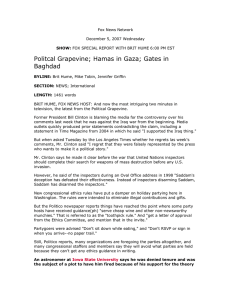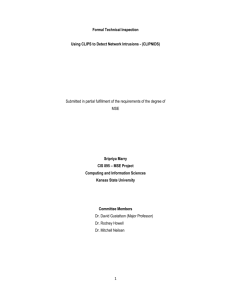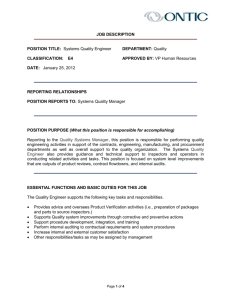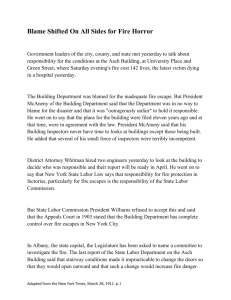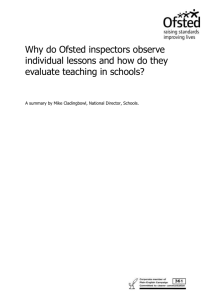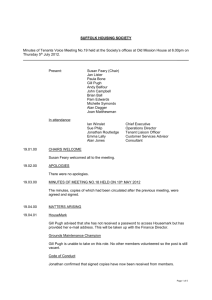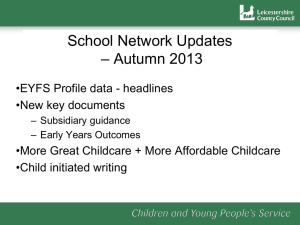Elizabeth Parker Case Analysis: Leadership & Management
advertisement
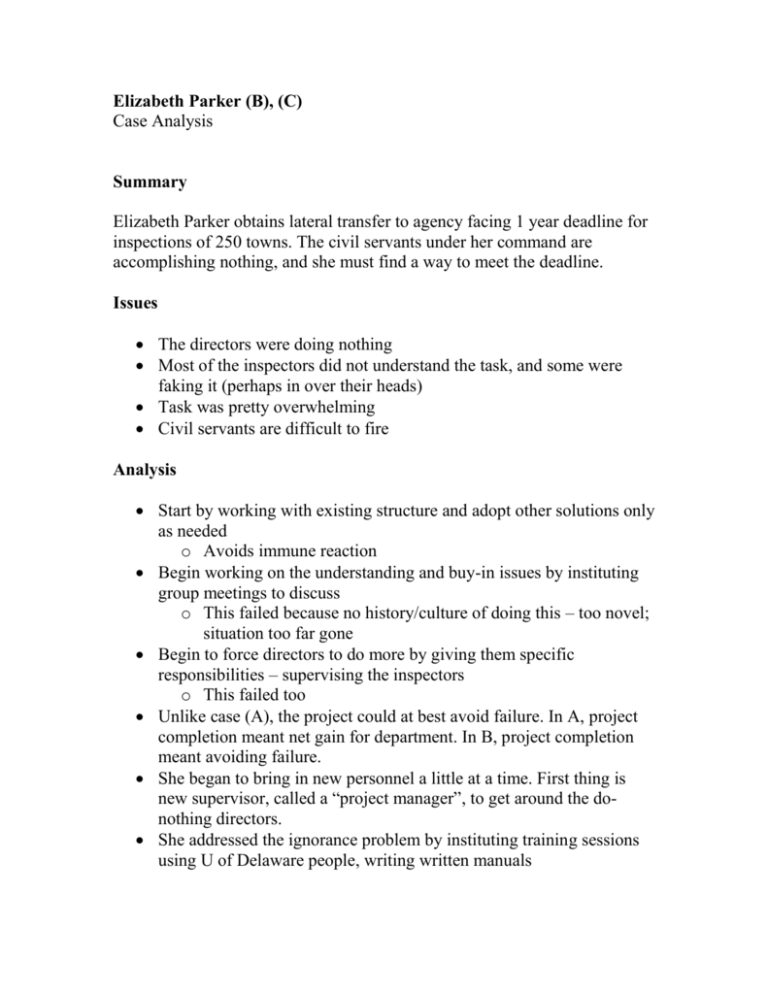
Elizabeth Parker (B), (C) Case Analysis Summary Elizabeth Parker obtains lateral transfer to agency facing 1 year deadline for inspections of 250 towns. The civil servants under her command are accomplishing nothing, and she must find a way to meet the deadline. Issues The directors were doing nothing Most of the inspectors did not understand the task, and some were faking it (perhaps in over their heads) Task was pretty overwhelming Civil servants are difficult to fire Analysis Start by working with existing structure and adopt other solutions only as needed o Avoids immune reaction Begin working on the understanding and buy-in issues by instituting group meetings to discuss o This failed because no history/culture of doing this – too novel; situation too far gone Begin to force directors to do more by giving them specific responsibilities – supervising the inspectors o This failed too Unlike case (A), the project could at best avoid failure. In A, project completion meant net gain for department. In B, project completion meant avoiding failure. She began to bring in new personnel a little at a time. First thing is new supervisor, called a “project manager”, to get around the donothing directors. She addressed the ignorance problem by instituting training sessions using U of Delaware people, writing written manuals She made task less overwhelming by taking over the scheduling for the inspectors. This also served to reduce ability to fake it and be accountable She introduced fear of failure by having inspectors present to the Secy of Environmental Affairs Helped inspectors by getting firms to cooperate She made “her” inspectors the majority New people were trained by the good inspectors, ending the cycle of bad socialization Key Lessons Formalization & scientific management were helpful to impose order and enable low level personnel to get things done. Made much more use of authority than in A, but mostly it was borrowed from her boss It is not enough to specify worker outputs. To get results need to specify work process If dependent on those who are resisting you, reduce dependence on some, and control the others. Resource-Dependence theory. Choose big tasks from which you will emerge with respect and power At the end, she promotes people, making them indebted to her She builds the identification kind of power (see Kotter) Discussion Questions Is this case about how you get power? Or how you use power to get things done? o She made use of authority several times o She slowly infiltrated her people o She probably gained a huge amount of respect for completing this in time Who was she dependent on, and why? o Boss for his authority, inspectors for their labor How did she reduce her dependency on the directors and inspectors? How does she manage her dependency on boss? o Protecting from enemies o Doing a good job What did Dempsey accomplish? o Opting out (like Nick on The Apprentice) meant he became dispensable – others reduced dependence on him, so his power was reduced o Failed to gain from this. Can’t call on Elizabeth in the future to accomplish things. Kotter’s thesis is that managers need power to manage. Is Elizabeth Parker a case in point? Knowledge of the network was key in A and visible in B when she brought in Jensen (knowing who knows what) In Kotter’s terms, what is the basis of her power?

